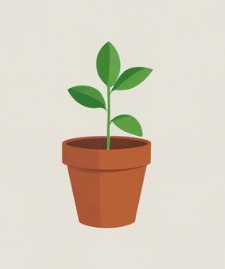Vertical gardening is a smart choice for small spaces — but if you live somewhere hot, like I do here in Thailand, it comes with its own set of challenges. The intense sun, dry air, and rapid water loss can make it tough on both your plants and your gardening system.
But don’t worry — with a few smart tweaks, vertical gardening can thrive even in hot climates. I’ve done the research and gathered tips from other hot-weather gardeners, and here’s what really works.
☀️ 1. Choose Heat-Tolerant Plants
Some plants just handle the heat better than others. Go for crops that like the sun and don’t mind drying out a bit between waterings.
Top picks for hot weather vertical gardening:
- Cherry tomatoes
- Peppers (especially hot varieties)
- Basil and oregano
- Sweet potatoes (for their leafy greens too!)
- Malabar spinach
- Eggplant
- Pole beans
- Rosemary, thyme, and sage
💡 Pro tip: Local varieties or native plants are often better adapted to your heat and humidity.
🧴 2. Keep the Soil Moist (But Not Wet)
Vertical gardens dry out faster than ground beds — and that’s even more true in hot climates. The trick is to water efficiently and retain moisture as long as possible.
Tips that help:
- Add coconut coir or vermiculite to your soil mix to hold more water
- Water in the early morning or late evening
- Use mulch (like straw or dried leaves) on top of soil pockets
- Try drip irrigation or a wicking system for consistent moisture
If you’re using something like the Garden Tower 2, its built-in moisture flow helps — but still check the top levels more often, as they dry out first.
🧤 3. Provide Some Shade (Yes, Really)
Too much sun can stress your plants — especially delicate greens and herbs. A little midday shade can actually improve growth and reduce watering needs.
How to add shade without blocking everything:
- Use shade cloth (30%–50% is ideal for veggies)
- Reposition your tower or planter to get morning sun and afternoon shade
- Grow taller plants (like tomatoes) on the sun-facing side to protect lower herbs
- Drape netting or garden fabric during heatwaves
You don’t have to block all the sun — just take the edge off during peak hours.
🍃 4. Use Light-Colored or Reflective Materials
Dark pots and containers absorb more heat. In hot climates, this can make root zones too hot for healthy growth.
Solutions:
- Use white or light-colored containers
- Wrap dark systems in reflective material or garden fabric
- Paint DIY systems in pale tones (even a quick spray paint helps)
Keeping the soil cool helps plants stay hydrated and reduces stress.
🧱 5. Protect Your System from Dry Winds
Hot, dry wind can suck moisture from both soil and leaves — especially in balcony gardens or exposed patios.
Reduce wind stress:
- Position planters near walls or fences for shelter
- Use trellises or plant screens as windbreaks
- Grow trailing vines or bushy herbs as natural shields
- Water a little more often on windy days
Even something as simple as moving a tower closer to a wall can help protect it from drying out.
🧑🌾 Final Thoughts
Hot weather doesn’t mean you can’t enjoy fresh veggies in a vertical garden — it just means being a bit more strategic. Choose the right plants, keep your soil cool and moist, and don’t be afraid to offer your garden a little shade and shelter.
I know from experience how intense the sun can be in tropical places, but I’ve also seen how well these systems can perform with just a few small adjustments.
And remember — some trial and error is part of the fun.
